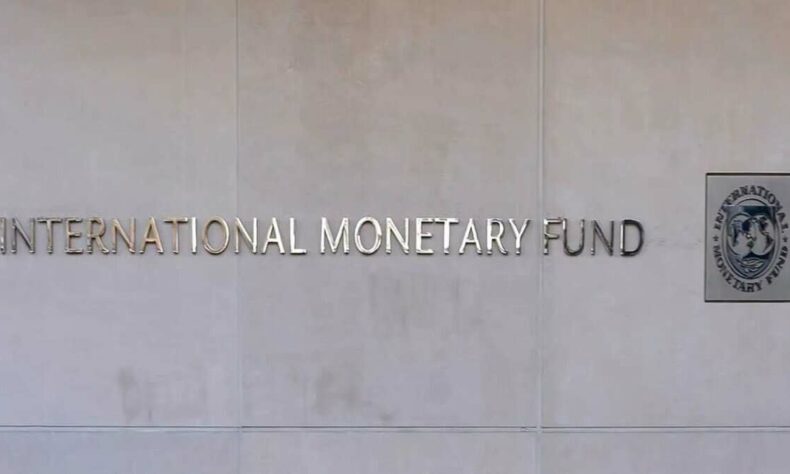
Washington: The US and global economies will grow a bit more this year than previously forecast as the Trump administration’s tariffs have so far proved less disruptive than expected, the International Monetary Fund said Tuesday, though the full impact of those policies is still emerging.
The United States’ economy will expand 2 per cent in 2025, the IMF projected in its influential semi-annual forecast, the World Economic Outlook. That is slightly higher than the 1.9 per cent forecast in the IMF’s last update in July and 1.8 per cent in April.
The US should grow 2.1 per cent next year, also just one-tenth of a percent faster than its previous projection, the IMF said.

The global economy, meanwhile, will grow 3.2 per cent this year, up from a 3 per cent estimate in July, the IMF forecast, and 3.1 per cent in 2026, the same as its previous estimate.
The figures represent a bit of a round-trip for the IMF: In January, before Trump began imposing tariffs, it had forecast global growth of 3.3 per cent, only slightly higher than its newest estimate. While the US and world economies have fared better than expected, it’s too soon to say they are fully in the clear, the IMF said, as Trump has continued to make tariff threats and it can take time for changes in international trade patterns to play out.
The reasons for the better performance “are clear,” IMF chief economist Pierre-Olivier Gourinchas said in a blog post.
“The United States negotiated trade deals with various countries and provided multiple exemptions,” Gourinchas wrote. “Most countries refrained from retaliation, keeping instead the trading system largely open. The private sector also proved agile, front-loading imports and speedily re-routing supply chains.”
By front-loading imports, many companies were able to stock up on goods before the duties took effect, enabling them to avoid or delay price increases.
Yet many of those factors only reflect “temporary relief, rather than underlying strength in economic fundamentals,” the IMF’s report said.


The IMF also said that import price data in the U.S. shows that so far importers and retailers are paying most of the tariffs, not overseas companies, as many Trump administration officials have predicted. Over time, those firms are likely to pass on more of the price hikes to consumers, the IMF said.
There are signs that some downsides of the higher tariffs are starting to emerge, the IMF outlook said. Core inflation, which excludes the volatile food and energy categories, has ticked up to 2.9 per cent, according to the Federal Reserve’s preferred measure, up from 2.7 per cent a year ago.
Hiring has ground to nearly a halt, which could partly reflect a more cautious approach by many firms in the wake of the uncertainty created by the higher tariffs.
The IMF’s forecasts are modestly more optimistic than many private-sector economists’ expectations. The National Association for Business Economics, a group of academic and business economists, on Monday forecast that the US would grow just 1.8 per cent this year and 1.7 in 2026.
Nearly two-thirds of the economists surveyed by the NABE said they think the administration’s duties are nevertheless slowing growth, by up to a half-percentage point.
Other trends are offsetting some of the downsides of tariffs in the US, Gourinchas said. For example, a clampdown on immigration has reduced the supply of workers at the same time that hiring has slowed. As a result, the unemployment rate has remained low.
An artificial intelligence-driven investment boom in data centres and computing power has also provided a lift to the economy, Gourinchas noted in his blog post.
China, meanwhile, has weathered the hit from US tariffs by sending more of its goods to Europe and Asia, rather than the United States, and its currency has depreciated, which has made its exports cheaper. The IMF is forecasting that China’s economy will expand 4.8 per cent this year and 4.2 per cent in 2026, the same as in July.
In Europe, Germany is bolstering growth by increasing government spending to build up its military, Gourinchas said. The IMF now expects the 20 countries that use the euro to grow 1.2 per cent this year, up from a 1 per cent forecast in July, and 1.1 per cent next year, the same as three months ago.
The IMF is a 191-nation lending organisation that works to promote economic growth and financial stability and to reduce global poverty.
📰 Crime Today News is proudly sponsored by DRYFRUIT & CO – A Brand by eFabby Global LLC
Design & Developed by Yes Mom Hosting






